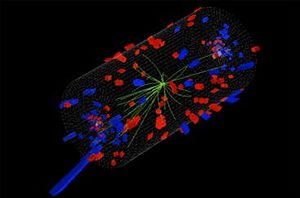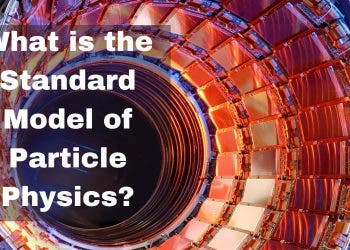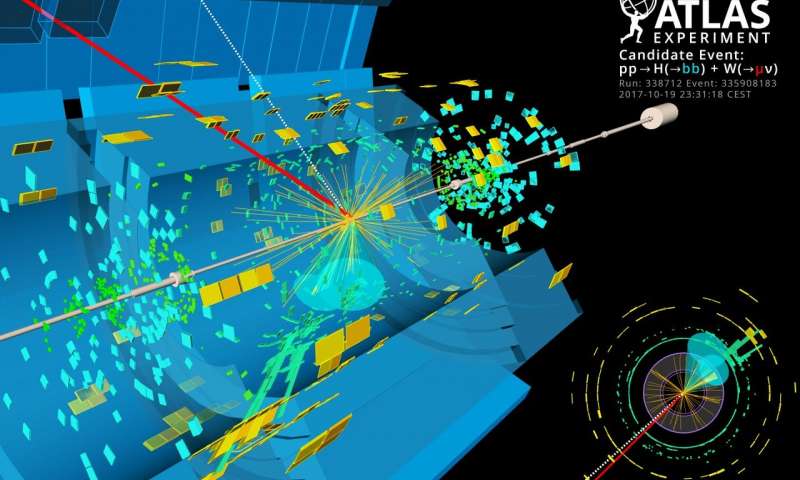
After the Large Hadron Collider‘s monumental find of the Higgs boson, the scientists in Geneva might have made new breakthrough finding. Scientists working with the Compact Muon Solenoid, one of the two major-magnet particle detectors in the LHC, have discovered a new form of matter known as color-glass condensate after studying proton-lead high speed collisions.
The Large Hadron Collider was designed to accelerate particles at near-light speed velocities and collide them at tremendous amounts of energy, in order for them to garner more mass. This allows for more “shrapnel” made out of sub-atomic particles to be discarded, in which scientists are extremely interested. By studying collision behavior between various kinds of particles, the scientists can recreate the conditions of the universe in the few micro-moments immediately following the Big Bang, and thus test out theories.
The resulting sub-atomic particles, usually fly about in all directions, but in some cases, a few in thousands, some of these particles fly away from each other with their respective directions correlated. This has been seen before in the case of proton-proton interactions, as well as other ion-heavy collisions like those between the nuclei of heavy metals like lead. Now, scientists working with the Compact Muon Solenoid (CMS) team at the LHC found the same effects in a sample of 2 million lead-proton collisions.
“Somehow they fly at the same direction even though it’s not clear how they can communicate their direction with one another. That has surprised many people, including us,” says MIT physics professor Gunther Roland, whose group led the analysis of the collision data along with Wei Li, a former MIT postdoc who is now an assistant professor at Rice University.
The data was taken after only four hour of operation at little more than half the particle accelerator’s full capacity. It has been theorized that proton-proton collisions may produce a liquid-like wave of gluons, known as color-glass condensate. The researchers believe that the same swarm of gluons might have also produced the same unusual collision pattern seen in proton-lead. Why is this important? Well, for one these results were far from being expected. The researchers only introduced a proton-lead collision experiment in order to build control data for proton-proton collisions. Every bit of information that leads to a better understanding of how particles and sub-atomic particles interact is of great value, and this latest discovery makes no exception.
The LHC had only just begun colliding these two types of particles together in September, so the surprising results are doubly impressive. The scientists currently have planed another run of collisions within a few weeks to see if the findings are replicated.
The findings were reported in the journal Physical Review B.
source: MIT News






